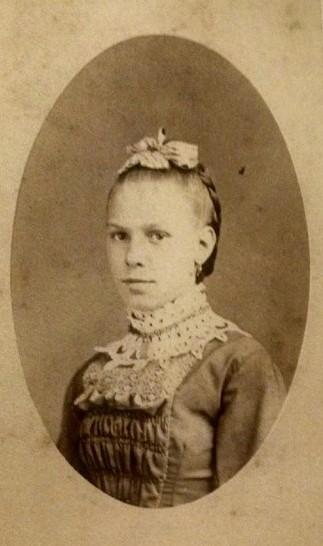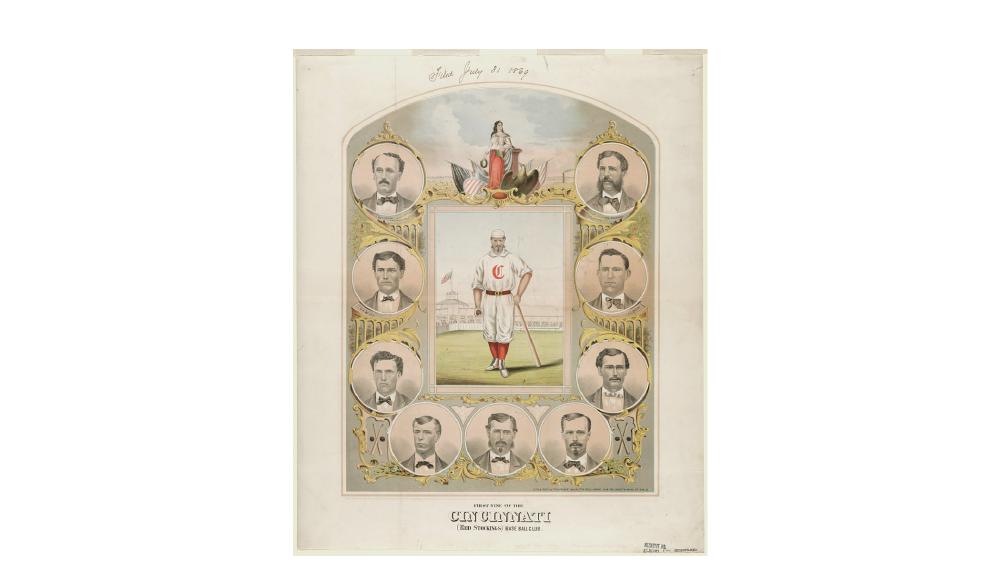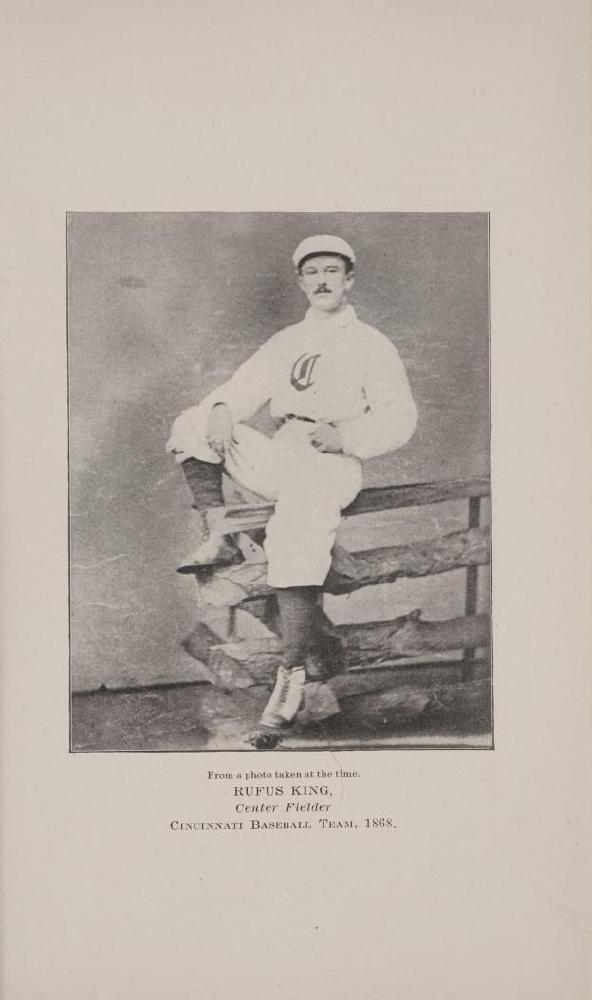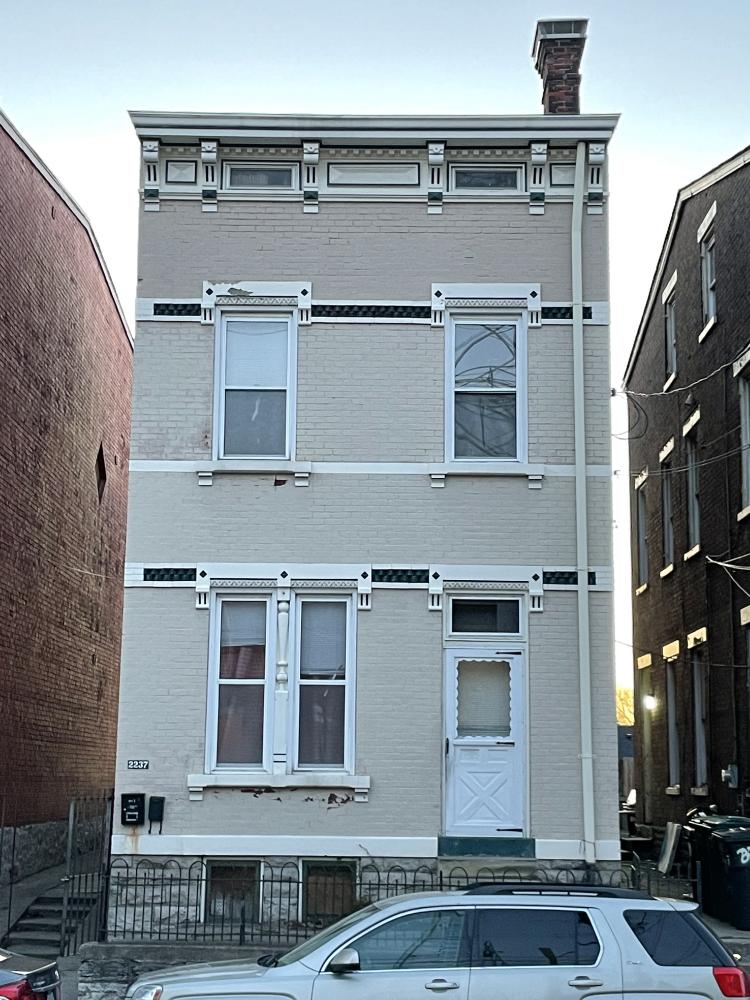Bertha Bertram Hit a Home Run with Needle and Thread
Bohemian immigrant Bertha Wenzlick Bertram is known for one thing in Cincinnati history—she was the official seamstress of the Cincinnati Redlegs and sewed the uniforms they wore in their undefeated 1869 season. Much as these magic uniforms are an important part of Cincinnati history, research reveals that Mrs. Bertram had other accomplishments too.
Bertha Wenzlick Bertram was born in 1840 in Bohemia (today’s Check Republic). Her family immigrated to Milwaukee when she was ten years old. She married Carl (Charles) Bertram, who was also from Milwaukee, in Cincinnati in 1864. Charles had returned from three years of Union service in the 6th Wisconsin Volunteers after losing his left arm at Antietam. He first worked as a clerk for the Volksfreund newspaper, then an U.S. assistant assessor, but was also in and out of a treatment facility in Dayton, while Bertha earned money as a seamstress. The Bertrams moved around Over-the-Rhine, but lived for several years at the southeast corner of Liberty and Elm Streets where Carl died in 1878 at 39 years of age. Carl and Bertha had four children, Anna born in 1866, Charles in 1871, Fred in 1875, and baby Daniel was born in 1878, the same year that Carl died, leaving Bertha a widow with four young children.
Bertram’s most well-known accomplishment was sewing the uniforms for America’s first professional baseball team, the undefeated 1869 Cincinnati Redlegs. Yet, Bertram had actually been sewing their uniforms for two years by the time they went pro.
In his 1907 Baseball in Cincinnati, Harry Ellard shared the story of the Reds’ original uniforms. The design had been devised by the author’s father, George B. Ellard, and included white flannel shirts and knee pants with red stockings. The stockings were a switch from a usual baseball uniform which included long pants--thus the team’s original name, The Redlegs. Ellard wrote, “the long red stockings were necessarily made to order, they were quite expensive, for they were up to that time unknown.” These new uniforms were first used in 1867 when George Ellard contracted with Bertram. She sewed for the team from 1867-1870 at her shop on Elm Street near Elder. According to Ellard, Bertram “also made the uniforms for other clubs which came into existence here during the seventies and early eighties, among which were the Ravens, Shamrocks, Stars, Riversides, Mutuals (of Cumminsville), and many others.”
While sewing must have kept her busy, Bertha Bertram also held another important role in Cincinnati history--raising thousands of Cincinnati children. In Cincinnati’s crowded tenement districts, childcare was a significant issue. Many families were forced to leave small children home alone while women went to work. Progressive reformers sought to solve this unsafe situation by funding day nurseries. Cincinnati’s Day Nursery opened in 1883 at what is today 1514 Race Street. The papers reported that the charitable women who founded the enterprise (one of whom was Rookwood Pottery founder Maria Longworth) had a hard time finding a suitable matron for the facility. They “were finally rewarded by securing in the person of Frau Bertha Bertram the most capable matron.” Bertha and her daughter Anna lived at the nursery, which was open to children from 6:00 am to 8:00 pm. They were responsible for childcare, laundry, and cleaning. The paper reported that in its first six months, the nursery’s top daily census had been a whopping nineteen children and that the nursery had hosted 1,236 children total, the youngest only five weeks old. Providing quality care for these children must have been a herculean task, but Bertha Bertram had the efficiency, patience, and kindness for the role. She first bathed each child and clothed it in uniform nursery clothes to keep the dirt and disease of the tenements out of the nursery, then fed them milk provided by a local dairy. An 1885 funding appeal in the Cincinnati Post introduced Bertha Bertram and some of the nursery children to motivate donations.
Bertram lived and worked at the nursery from 1883 to 1891 when her father left her a small inheritance. She then moved with her sons to a home they purchased at 2237 Guy (today Stratford) Street.
At the time of her death in 1912 she was living at 3114 Jefferson Avenue in Corryville. Cincinnati Redlegs Seamstress and caregiver extraordinaire, Bertha Bertram, is buried in Spring Grove Cemetery.
Images



